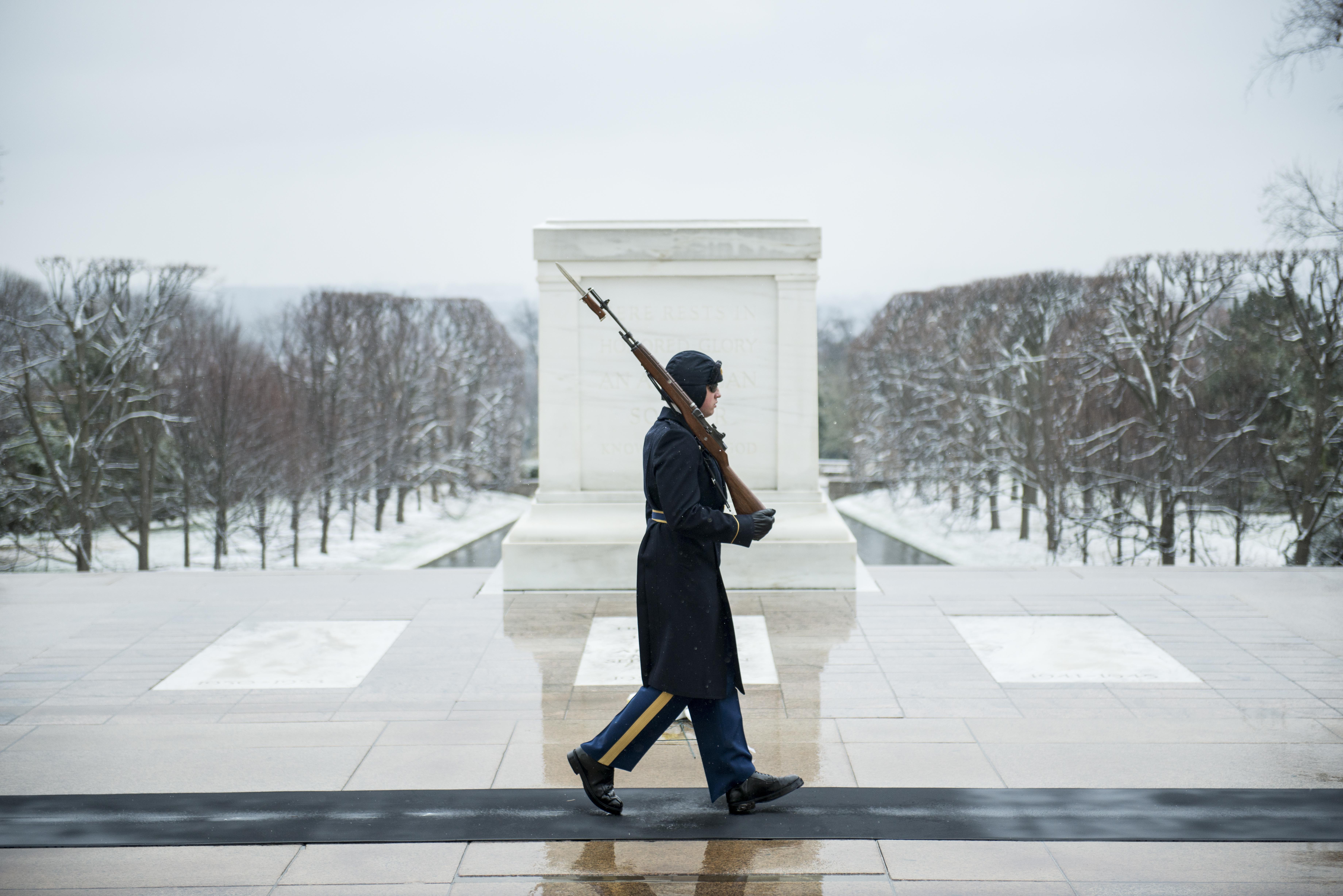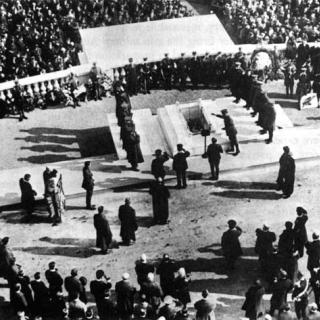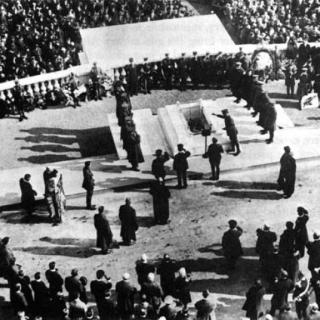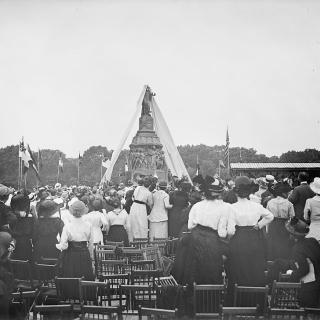Guarding the Tomb of the Unknown Soldier, 21 Steps at a Time
Lloyd Cosby remembers standing on the plaza at Arlington Cemetery, inspecting a guard change at the Tomb of the Unknown Soldier, when an elderly woman approached him. “Are the guards here at night?” she asked.
It was the late 1950s, during the year and seven months that Cosby served as the Tomb guards’ platoon leader. Later that day, the woman would tell Cosby about her son who had died at war, but had never been identified. The Tomb of the Unknowns was the only place she could come to pay her respects.
“Yes, 24 hours a day, 365 days a year,” Cosby told her. “Every second of every minute of every day.”
He told the woman that Tomb guards were, in a way, continuously awarding the Unknown Soldier the nation’s highest honor: a 21-gun salute. Cosby pointed to the Sentinel on duty, and counted as he turned to face the Tomb for exactly 21 seconds. The Sentinel turned again, paused for another 21 seconds, and took 21 steps forward. When he reached the other side of the Tomb, he started the process over.
There has been a Sentinel repeating this pattern since July 2, 1937 when the cemetery first posted a 24-hour guard at the Tomb. But the Tomb dates back to 1921, when Congress approved a resolution for an unknown and unidentified soldier from World War I to be buried in the Arlington National Cemetery Memorial Amphitheater.
The idea came from Great Britain and France, both of which had already conducted ceremonies to honor their unknown dead. There was some debate over where the U.S. soldier should be placed — some favored the Capitol, and at least one man favored Central Park, but Congress settled on Arlington. And on Memorial Day, 1921, four unidentified U.S. soldiers were placed side by side in identical caskets, and Sergeant Edward Younger was asked to select one randomly. He chose the third casket from the left.
The soldier was buried at Arlington later that year, and the grave was marked with a simple marble tomb that was to serve as the base for a more elaborate structure. A few years later, Congress would approve funding to build the 11-foot tall white marble sarcophagus that marks the site today. An inscription carved on the back of the structure reads, “Here rests in honored glory an American soldier known but to God.”
Families visiting Arlington in the early 1920s often mistook the Tomb for a picnic area, so the cemetery posted a civilian guard in 1925. It posted a military guard in 1926, but only during cemetery hours. At some point between 1926 and 1937, people began stealing pieces of the memorial after the cemetery closed for the day, and the Tomb Guard became a 24-hour position.
Today, all Sentinels are volunteers. They are all between 5-foot-10 and 6-foot-four, with a proportionate weight and build. They know the grave locations of nearly 300 veterans, and they are able to recite seven pages of Arlington Cemetery history word for word. They walk at a pace of 72 beats per minute, and they spend hours practicing their steps with a metronome. They get haircuts twice a week.
Only members of the 3rd U.S. Infantry Regiment are allowed to volunteer, and even then, training can only begin after an initial interview and two-week trial period. During training, volunteers learn how to conduct the Changing of the Guard, and how to care for their weapons and uniforms. They also learn to recite the Sentinel's Creed, which states, "my standard will remain perfection. / Through the years of diligence and praise / and the discomfort of the elements / I will walk my tour in humble reverence."
Sentinels are expected to maintain this standard at all times, and in all weather conditions. When a snowstorm shut down the government for a few days in 2010, the Sentinels were at the cemetery. They remained at their posts through Hurricane Isabel, Hurricane Irene, and Hurricane Sandy.
“It gets cold, it gets hot — but the Sentinels never budge,” the guards’ website states. “And they never allow any feeling of cold or heat to be seen by anyone.”
They do, however, take safety precautions when they serve under harsh weather conditions. During Hurricane Sandy, the team of Sentinels brought in a two-day supply of food and changed into wet-weather versions of their uniforms. They stood guard under a small enclosure 20 feet from the Tomb, where they were protected from the storm.
When it’s particularly cold, soldiers wear an overcoat, a warmer hat, and warmer gloves.
“These guys want to be here, they work hard to stay here,” Sgt. 1st Class Tanner Welch, Sergeant of the Guard, said during the 2012 snowstorm. “The guys in Afghanistan, they can’t stop because of snow. Guys in the mountains of Korea didn’t stop because it was snowing.”
Now, there is also an unknown soldier from the Korean War buried near the Tomb, as well as an unknown soldier from World War II. At one point, there was an unknown soldier from Vietnam — but in 1998, scientists were able to use advances in DNA testing to identify him. His body was returned to his family, and the crypt honoring the Vietnam unknown remains empty.
And with today’s technology, it’s possible that there may never be another unknown soldier. But that doesn’t change the Sentinels' mission. They have a motto: A soldier never dies until he is forgotten.
“Right when you cross the threshold of the chains — it’s like nothing else even matters,” John Arriaga, one of the current Tomb guards, said. “It is just 21 steps, 21 seconds — you and the three unknowns. It’s a feeling I can’t even explain.”






![Sketch of the mythical fuan by Pearson Scott Foresman. [Source: Wikipedia]](/sites/default/files/styles/crop_320x320/public/2023-10/Goatman_Wikipedia_Faun_2_%28PSF%29.png?h=64a074ff&itok=C9Qh-PE1)












